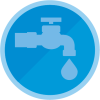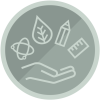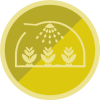Shellebrating Education on the North Carolina Oyster Trail
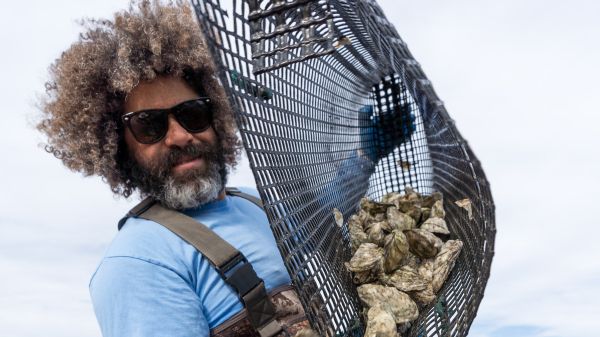
This blog post was written by Jane Harrison, Ph.D., coastal economics specialist at NC Sea Grant.
The North Carolina Oyster Trail offers unique and tasty adventures that allow N.C. visitors and residents alike to become more shellfish-literate. The Trail includes tours of working shellfish farms, seafood restaurants, markets serving local oysters year-round, and ample educational opportunities. With 90 sites to visit across the state, there is something for everyone to explore.
Do you know where your seafood comes from? Hop on a boat and learn how we grow oysters in North Carolina. Smell that salt breeze while you slurp down some of the most sustainable seafood on the planet.
Are you a fan of local foods? Taste our homegrown oyster rainbow—salty, sweet, and buttery shellfish. You can purchase our state’s oysters at a variety of markets and restaurants on the coast and inland, all featured on the NC Oyster Trail.
Did you know NC oysters are available all year long? Wild oyster season starts annually on October 15, but farmed oysters make it possible to enjoy them year-round. Get educated on how you can support a healthy coast and bountiful seafood for years to come.
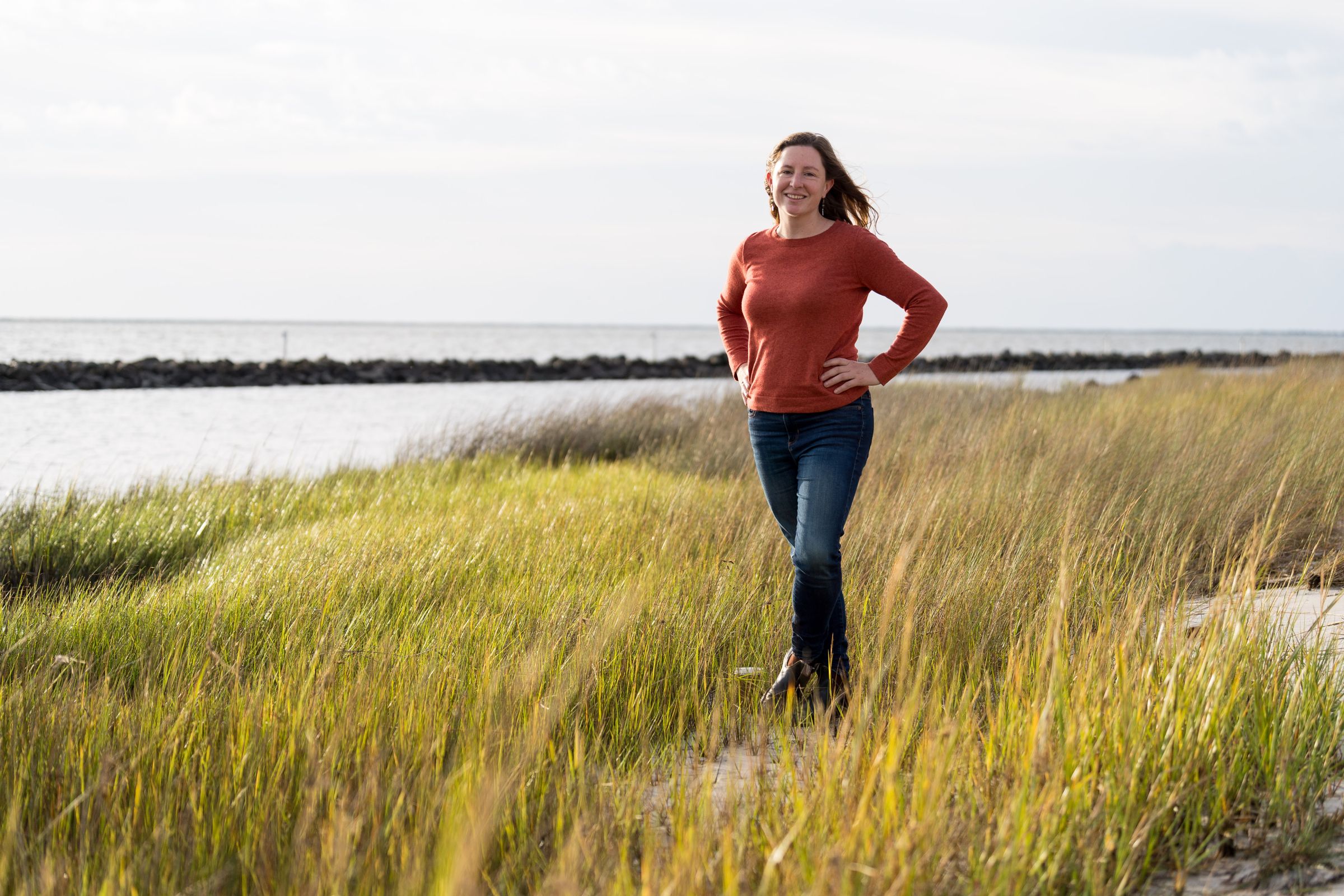
Jane Harrison of North Carolina Sea Grant shows off pristine estuarine habitat for oysters on Harkers Island, North Carolina. Photo credit: Justin Kase Conder
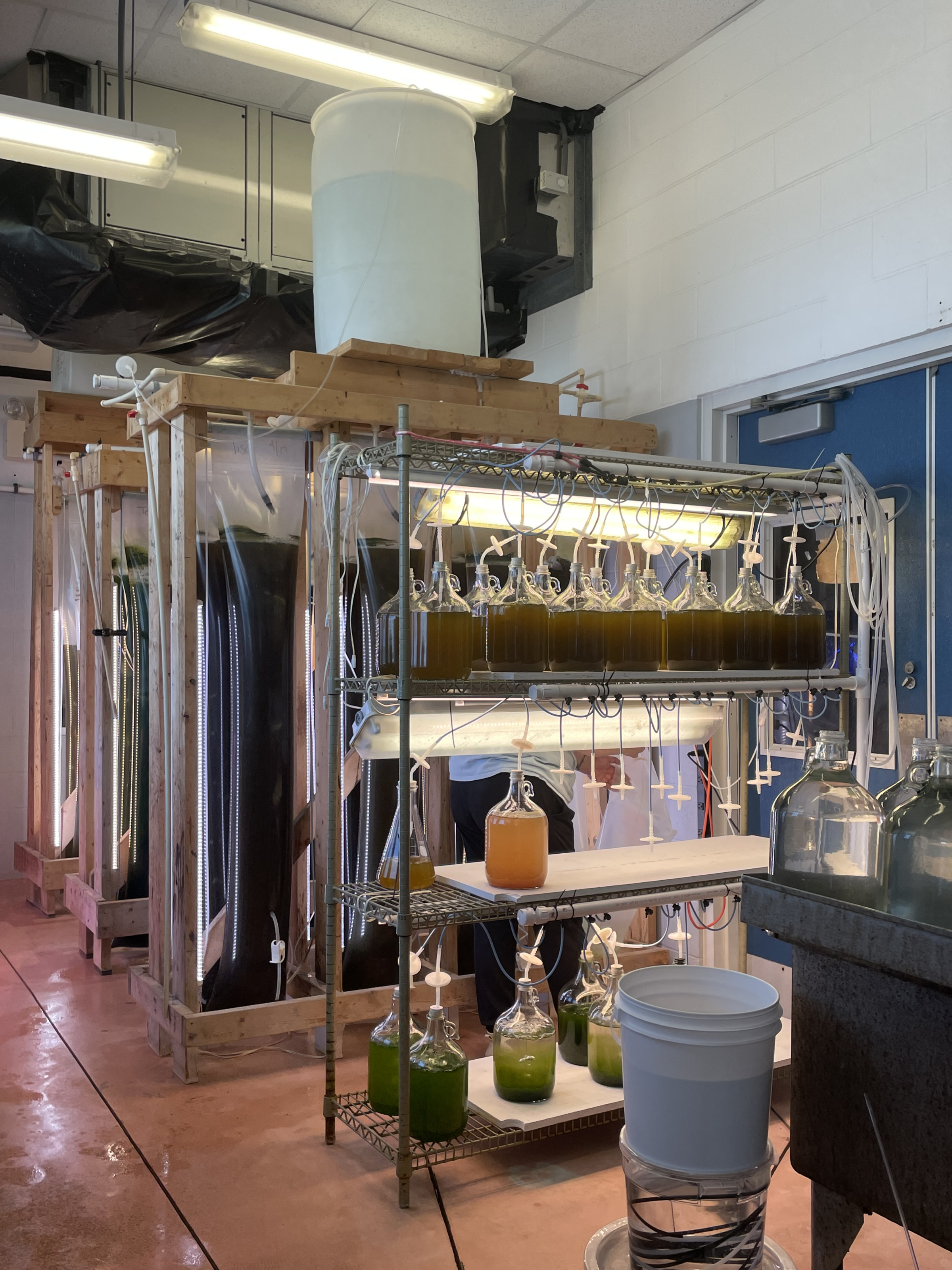
Algae culture is critical to growing many marine species, including oysters. Photo credit: Jane Harrison
The NC Oyster Trail organizes NC Oyster Month in October, putting on an event almost every day of the month to “shellebrate” oysters. This year, those events are being supplemented with an educational oyster photo exhibit supported by the eeBLUE Aquaculture Literacy Mini-Grants Program. The exhibit showcases the ecological, cultural, and economic importance of oysters and the people who help sustain this vital coastal resource.
This dynamic photo exhibit includes seven 3×3 ft displays, each highlighting a different aspect of North Carolina’s oyster story, from restoring coastal ecosystems to supporting local businesses. These beautiful and informative panels feature farmers, scientists, harvesters, and entrepreneurs who are helping oysters thrive.
An example of a featured topic in the exhibit is oysters’ contribution to a healthy ecosystem. A photo of a living shoreline on Harkers Island, NC, depicts the essential ecosystem services provided by oysters. Shellfish, such as oysters, improve water quality by filtering nutrients, provide habitat for 300+ species of finfish and crustaceans, and serve as a food source for marine organisms and humans.
Another key takeaway from the exhibit is that 50% of NC oyster production comes from aquaculture. North Carolina has more than 300 oyster farms. Aquaculture produces oysters without depleting wild stocks. Oyster farmers often use floating cages or bags to grow out oyster seed.
Beyond the exhibit, the eeBLUE grant supported two workshops that introduced mariculture lesson plans to high school teachers and nonformal science educators. The lesson plans were designed to align with NC science standards and the state’s Career and Technical Education programs. The 10 lesson plans cover a variety of subjects, launching student explorations of aquaculture species and biology, production methods, and even business planning.
A total of 17 educators were trained to use the mariculture lesson plans and led through facilitated exercises to modify the plans to suit their specific needs. For example, an aquarium educator tailored a lesson plan to focus on marine ornamentals aquaculture.
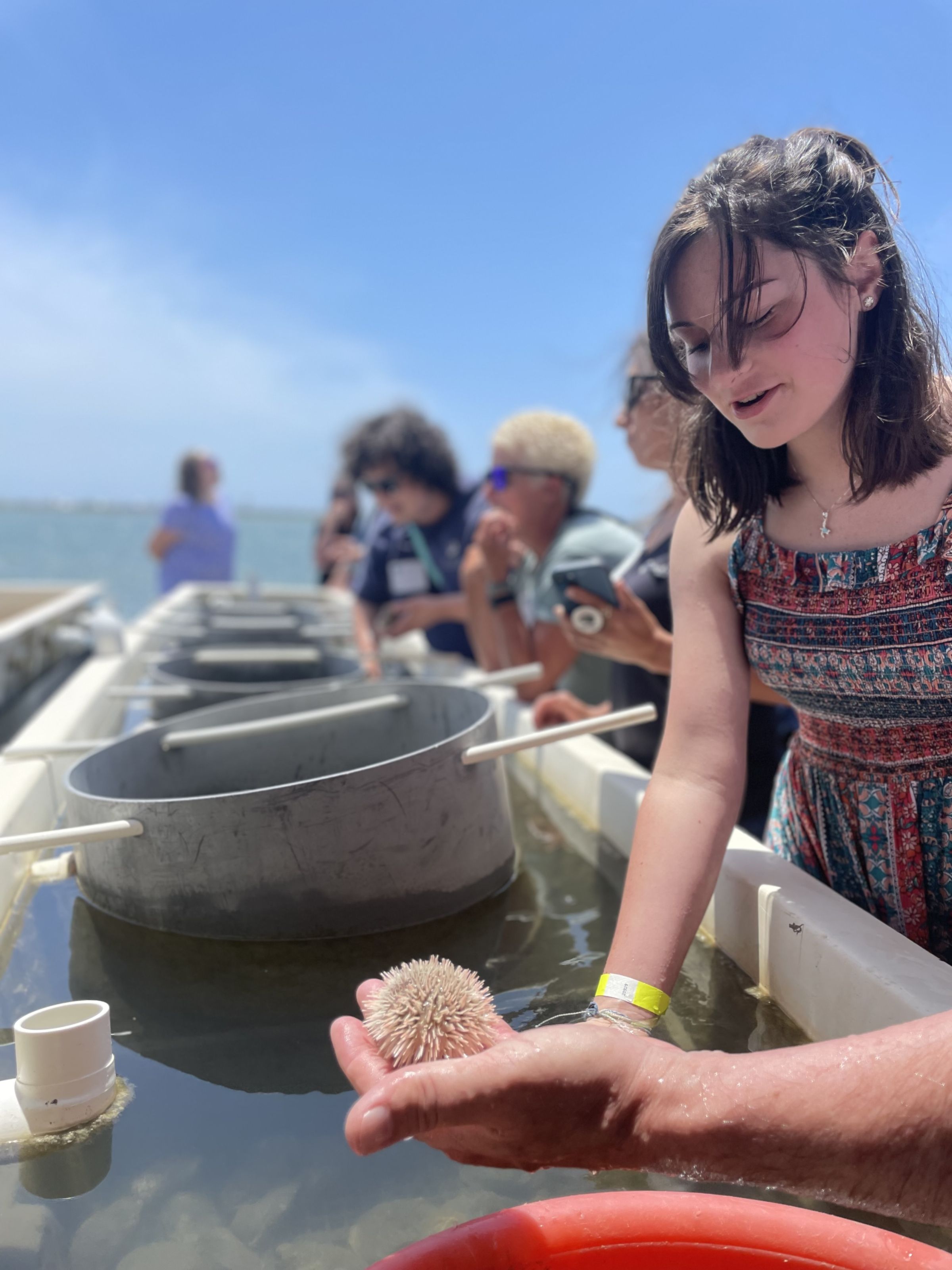
An outdoor aquaculture laboratory at Carteret Community College was the perfect spot for the mariculture education workshop. Photo credit: Jane Harrison
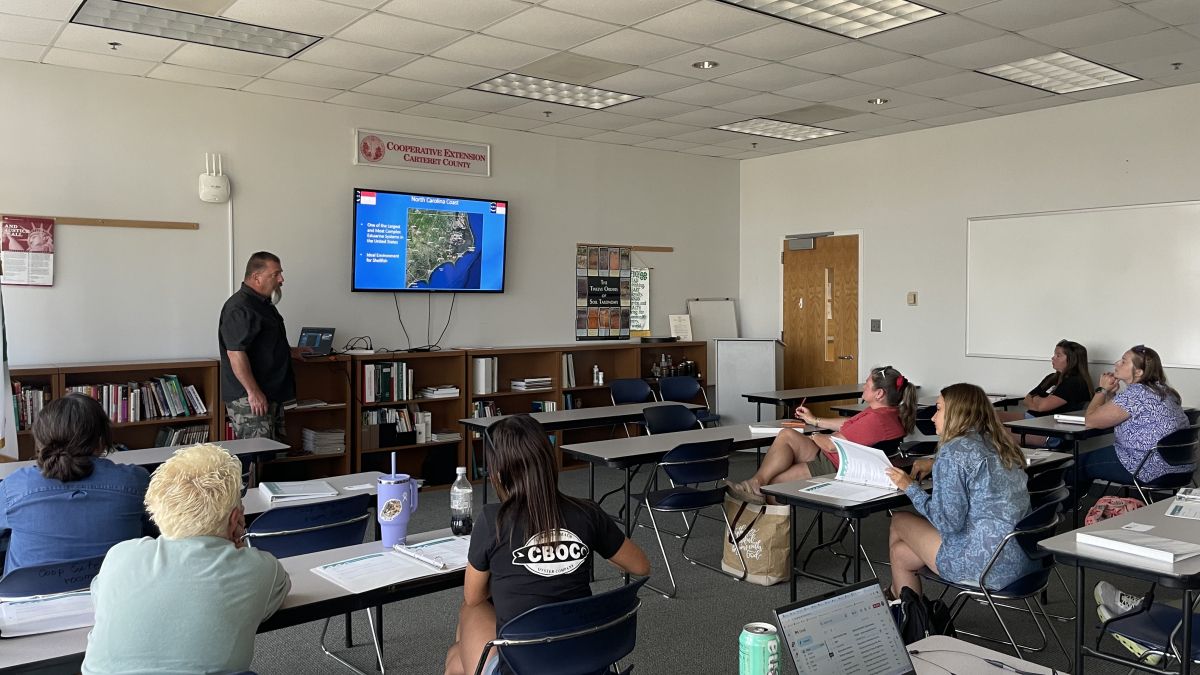
Educators learn about marine aquaculture from North Carolina Sea Grant’s aquaculture specialist Eric Herbst. Photo credit: Jane Harrison
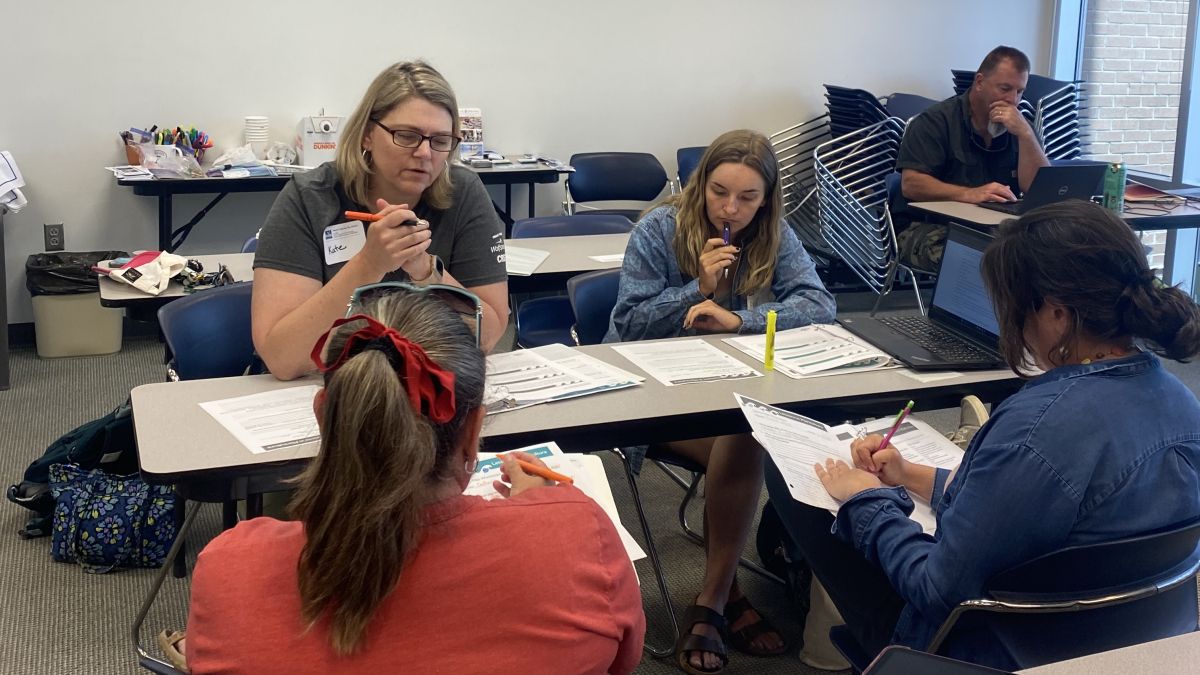
Teachers worked together to modify lesson plans for their classrooms. Photo credit: Jane Harrison
Workshop evaluations showed that knowledge of marine aquaculture increased across all topics covered. Educators shared their interest in teaching aquaculture concepts, remarking, “I want to teach the public about sustainable practices,” and “I want to speak confidently about local aquaculture and how it improves water quality and the economy.” They especially enjoyed a hands-on tour of Carteret Community College’s aquaculture laboratory. The teachers’ excitement as they encountered cultivated sea urchins, algae, tropical fish, and other marine organisms will inspire them to bring lessons learned back to their classrooms.
The NC Oyster Trail is a combined effort of NC Sea Grant, NC Coastal Federation, and the NC Shellfish Growers Association.
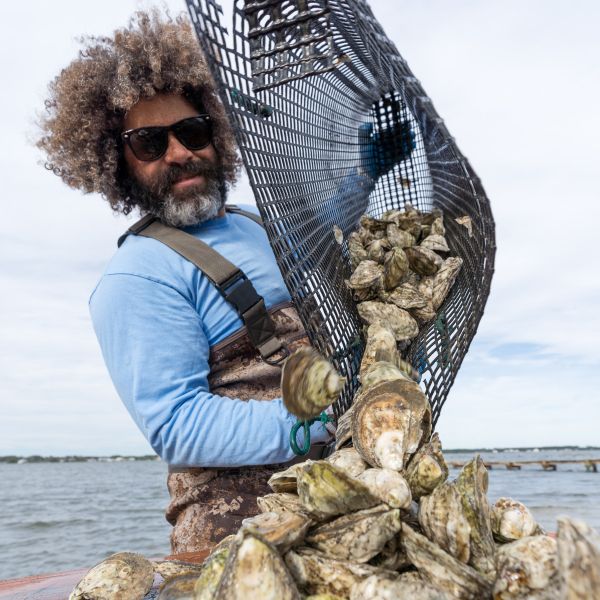
Ryan Bethea of Oysters Carolina empties a bag full of tasty oysters from his farm. Photo credit: Justin Kase Conder
With the eeBLUE Aquaculture Literacy Mini-Grant program, NAAEE is driving significant change for a second time! We are supporting partnerships with the common goal of aquaculture literacy set by the National Oceanic and Atmospheric Administration’s (NOAA) Office of Education, the National Marine Fisheries Service (NMFS), and the National Sea Grant Office. The nine mini-grants awarded will provide more than just financial support; they catalyze innovative educational experiences focused on aquaculture topics and promote public aquaculture literacy in eight states. These grants empower nonformal learning institutions (like aquariums), the aquaculture industry (such as shellfish, finfish, and seaweed farmers), and NOAA partners to make a tangible impact on our understanding of aquaculture. From "Agriculture in Aquaculture” to "Empowering Ocean Stewards," these grantees are helping to support a blue planet!
